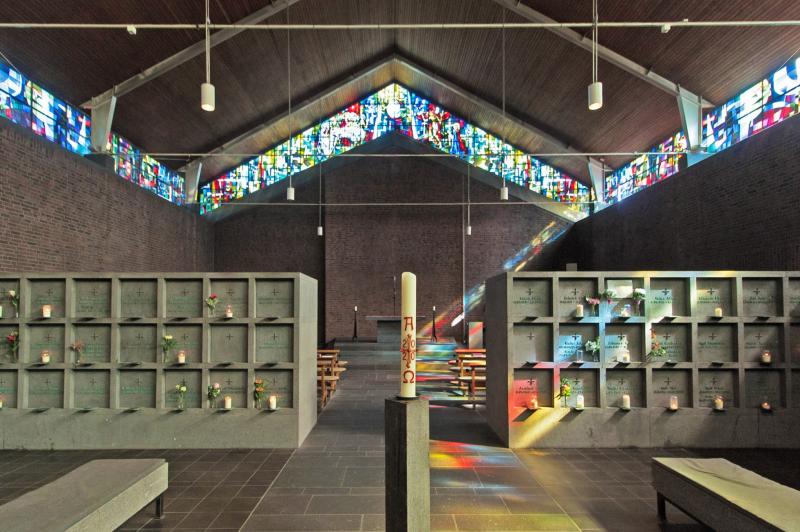Kreuzstraße 321 u. a., 45770 Marl
1968 / 1970er / 1982
Architekt Prof. Hermann Schröder
(architectural design, execution hill house 1)
Regierungsbaurat Roland Frey
(architectural design hill house 1)
Claus Schmidt
(architectural design hill house 1)
Prof. Peter Faller
(execution hill house 1)
Advanced search with more criteria
Total projects: 483

45770 Marl
Distance: 1.16 km

45772 Marl
Distance: 3.53 km
At Brüderstraße 60, a property near marl city centre, south-east of the town hall, in 1965 the first housing hill house in Europe was built.
Such a “housing mountain” is the attempt to combine a single-family house’s advantages with a higher housing density.
The Wohnhügel consists of four linked four-storey houses with a total of 46 dwelling units. All houses are accessed by their own staircase at the east side. All houses are linked by an underground garage accessed by a ramp at the north side. The triangular cross-section, which lends the building its name and appearance, derives from the fact that the three upper floors have a double pitch roof in which the terraces have been cut. The floor space gets smaller from floor to floor. The ground floor still has a building depth of almost 42m, the first floor 23m and the third floor 10m. The ground floor flats have their own garden, the upper floors have terraces protected by large plant pots. The floor-to-ceiling windows in the living room and the open terrace allow the dwellers to partake in the course of the seasons. The Wohnhügel has flats of various sizes; a change of flats if the number of family member changes has thus always been guaranteed. At the time of construction, the flats were more lavish in size then was then customary.
The ensemble of the four Wohnhügel built until 1982 is now part of the Marl townscape and pleasantly contrasts with the rather conventional housing elsewhere in town.
This first German Wohnhügel was a test building to try the possibilities this form of housing and any development might provide.
Author: Patrizia Tomza (MAI) / editorial baukunst-nrw
Text last changed on 10.07.2024
Categories:
Architecture » Residential buildings » Multiple Housing